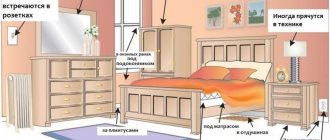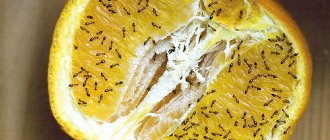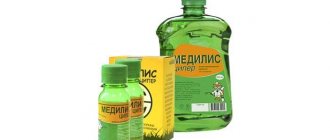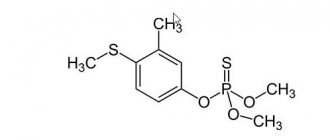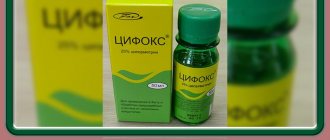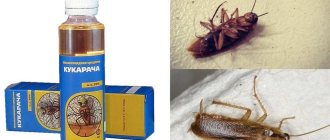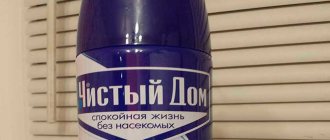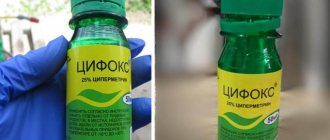Danger of ticks
The most dangerous ticks for humans and their pets are those that live in forests. They carry serious diseases:
- tick-borne encephalitis,
- babesiosis,
- tick-borne typhus (typhus or relapsing),
- Lyme disease,
- ehrlichiosis.
There is another problem. Since it is extremely problematic to completely remove an attached parasite, its head often remains in the wound. It serves as a source of infection and/or inflammation.
Other types of mites - bed mites, scabies mites, subcutaneous mites, gamas mites - are less dangerous, although they cause discomfort at any time of the year. Allergies and bites are why they are a problem for many. They are not easy to detect, but there are signs indicating that ticks live in an apartment:
- the appearance of urticaria,
- exacerbation of bronchial asthma,
- severe itching all over the body.
If you find a tick, you should go to the hospital. Specialists will provide the necessary assistance to reduce the consequences of contact with a dangerous arthropod.
Cypermethrin 25 ke cypermethrin chlorpyrifos
The drug does not harm the environment and is relatively safe for humans. • Tetrix - chlorpyrifos 20%, cypermethrin 10%; • Sichlor - chlorpyrifos 20%, cypermethrin 10%; • Globol Schaben Paste; • Get; • Dobrokhim Micro.
Chlorpyrifos is a deadly weapon against insects. It does not scare away with a pungent odor, but kills. The substance is in microcapsules, therefore it is safe for animal and human health. Capable of protecting housing for up to 6 months. Acts quickly in case of severe infection.
house bug
What is cypermethrin
Cypermethrin is a substance that belongs to the group of pyrethroids and has a nerve-paralytic effect on ticks. Preparations based on it have become widespread due to their high efficiency and relative safety for humans. This substance is not addictive to insects, and therefore can be used repeatedly in the same room.
The effect of cypermethrin on pests
Cypermethrin is used in the fight against ticks, as well as the following insects:
- cockroaches,
- bed bugs,
- fleas,
- mosquitoes,
- flies,
- ants.
It has the same effect on everyone: when it enters the body of an insect or arthropod through the chitinous layer or through the mouth, it blocks the transmission of nerve impulses, which leads to paralysis and subsequent death of the individual. In addition, shortly before death, the pest becomes more vulnerable due to weakening of the neuromuscular connection.
Products based on cypermethrin act quickly - in about half an hour you can detect dead ticks, ants, cockroaches, etc.
Advantages and disadvantages of Cypermethrin
Advantages
- Destruction of a wide range of pest species;
- High initial activity;
- Long-lasting protective effect;
- Convenient preparation of working solution;
- Resistance to ultraviolet rays;
- Does not cause resistance;
- Easy post-treatment with alkaline preparations.
Flaws
- Specific smell;
- Since the impact does not extend to egg laying, the possibility of new treatments;
- Personal protective equipment is required during use;
- By using the substance on a personal plot, it is possible to destroy beneficial insects.
Forms of release, composition of funds
Cypermethrin in its pure form is a clear liquid with a slight odor. Depending on the manufacturer, preparations based on this substance may contain other insecticides.
There are three forms of release of the product:
- Concentrated emulsion (concentration from 5 to 25%), for example, “Tsifoks”. The drug is highly effective and is used both by professional services and independently to combat insects. Available in containers of 50 ml, 500 ml and 1 l. Before use, the emulsion is diluted with water according to the instructions.
- Powder for dissolution, for example, “Super FAS”. This is a universal insect repellent based on Z-cypermethrin. Often used by professionals and ordinary people.
- Tablets, for example, "Iskra". Designed to combat ticks outdoors.
Forms of cypermethrin
There are different forms of cypermethrin:
- alpha-cypermethrin is a crystalline substance that has a long-lasting residual effect and has a detrimental effect on the nervous system of insects and arthropods,
- beta-cypermetron is a contact-intestinal insecticide intended for use outdoors due to its high toxicity,
- zeta-cypermethrin is an insecticide that is most often used in forestry due to its high effectiveness against pests of apple and coniferous trees, wheat and barley.
Manufacturers claim that each form of cypermethrin has a different effect on certain pests, but no significant differences in action were found.
Method of application and consumption rates
The most common method of using the drug is spraying an aqueous emulsion with a concentration of up to 0.1% inclusive. The use of more concentrated solutions requires the participation of professionals. Various emulsions are commercially available. The most concentrated option available to non-professionals is cypermethrin 25 (the instructions for use state that the number corresponds to the content of the active insecticide). Cypermethrin instructions for use provide for preliminary preparation of the solution.
The consumption rates of the finished emulsion depend on the type of insects being destroyed:
- against cockroaches, bedbugs and fleas: 0.1% solution, 50 ml./sq.m. non-absorbent surface and 100 ml./sq.m. for absorbent;
- against flies: 0.01% solution 100 ml/sq.m.;
- from ants: 0.05% solution 50 ml./sq.m.;
- from hornets and wasps: 0.1% solution 100-200 ml./sq.m.
Instructions for use
Products based on cypermethrin belong to the second and third hazard classes. Despite the destructive effect on insects and arthropods, the substance is much less dangerous for animals and humans. But large doses and careless use of the product lead to poisoning and allergic reactions.
When using drugs with cypermethrin, you must adhere to the instructions that each manufacturer individually draws up for their products. There are several general principles that are important to follow during pest control:
- remove all people not involved in processing from the premises,
- remove all food, personal belongings and dishes,
- bring the product into a form suitable for use, i.e. dilute in water if we are talking about an emulsion,
- to carry out the procedure, wear thick long-sleeved clothing, a respirator, rubber gloves, special glasses or (which is better) a protective suit,
- to avoid the return of ticks, carry out a thorough treatment, paying attention to baseboards, carpets (on both sides), sewer pipes, furniture, places where wallpaper peels off,
- At the end of the procedure, leave the room for two hours, open the windows or vents to ventilate the apartment, and carry out wet cleaning.
Although manufacturers of cypermethrin claim that ticks are not addictive to this substance, one should not be negligent about the quality of processing. There are a number of reasons for this:
- toxicity - the product is relatively safe, but it is unknown what long-term (six months, for example) contact with it will lead to,
- pests can appear at the most inopportune moment - after treatment there is a small chance of survival of part of the population, and over time the effect of cypermethrin will weaken, cockroaches, bedbugs and ticks will move into the apartment again (the likelihood of the latter exists even with conscientious use of the product, so you should also not forget about prevention),
- money spent - this point follows from the previous two and implies an increase in costs for the fight against insects and arthropods in case of inattention to treatment with cypermethrin and other insecticides.
After cleaning, it is better not to enter the apartment for 12 hours, and if among the residents there are children, old people, people with allergies or weakened immune systems - 24 hours.
The use of powder and tablets with cypermethrin is no fundamentally different from the use of an emulsion. The difference is in the method of dilution and the amount of product consumed per liter of water, which each manufacturer indicates individually, based on the concentration of the active substance in the product.
Table: dosage when diluting the emulsion for different types of pests
| Pest type | Concentration of active substance (in%) | Recommended emulsion concentration (in%) | Amount of drug (in grams) per amount of water (in liters) | ||
| 1 | 5 | 10 | |||
| Ixodid ticks | 0,19 | 0,75 | 7,5 | 37,5 | 75 |
| Dermacentor and Haemaphysalis | 0,31 | 1,25 | 12,5 | 62,5 | 125 |
| Ixodid ticks and fleas (for clothing treatment) | 0,12 | 0,5 | 5,0 | 25 | 50 |
| Mosquitoes | 0,01 | 0,04 | 0,4 | 2 | 4 |
| Cockroaches | 0,1 | 0,4 | 4,0 | 20 | 40 |
| flies | 0,1 | 0,4 | 4,0 | 20 | 40 |
| Fleas | 0,1 | 0,4 | 4,0 | 20 | 40 |
| Bed bugs | 0,01 | 0,04 | 0,4 | 2 | 4 |
| Ants | 0,01 | 0,04 | 0,4 | 2 | 4 |
Video: interesting about the use of cypermethrin
Precautionary measures
Although the product is characterized by low toxicity, precautions when working with it are required. The person performing the treatment must protect the face and skin from contact with the substance. To do this, you need to wear rubber gloves, special clothing and a respirator. During the treatment of the apartment against bedbugs and the next 24 hours, it is advisable to move all residents and pets to another apartment. It is also recommended to remove personal belongings and hygiene items from the apartment. Clothes, soft toys, mattresses and bedding must be treated in the hottest possible water. All contact surfaces (especially those that children can touch) must be thoroughly wiped with a soda-soap solution.
OUR READERS RECOMMEND! To get rid of BUGS, our readers recommend the Pest-Reject repeller. The operation of the device is based on the technology of electromagnetic pulses and ultrasonic waves! Absolutely safe, environmentally friendly product for humans and pets. Read more here...
Safety of using cypermethrin in rooms with children and pets
If children and pets live in the house, cypermethrin-based preparations can be used, but with even greater caution. It is not recommended to use such products in rooms where children under 12 years of age sleep or spend a lot of time. Babies are especially vulnerable, as they want to taste everything. Such curiosity, although driven by the desire to explore the world, is dangerous when using insecticides indoors, even after thorough cleaning. If there is a need to treat an apartment with cypermettin, then it is better for the child to spend several weeks with relatives or family friends.
According to research, even small traces of cypermethrin can enter the child’s body. In most cases, the drug is eliminated without causing any harm, but increased concentrations of cypermethrin metabolites in tests correlated with problems in the perception of oral speech in children. The mechanism of this effect has not been studied, and the results may be due to statistical error.
Animals can cause a lot of problems in this matter. Often it is dogs and cats that bring fleas, ticks and bedbugs into the house, and therefore individual treatment of the pet with special means is necessary.
Symptoms of poisoning
Insecticide poisoning manifests itself as follows:
- increased salivation,
- impaired coordination of movements,
- convulsions,
- headache,
- nausea,
- general lethargy.
If at least one of the symptoms appears, follow these steps:
- Stop processing immediately.
- Change your clothes.
- Rinse your mouth with a baking soda solution and take 15 tablets of activated carbon.
- Get out into the fresh air and call an ambulance.
Despite the declared (relative) safety, cypermethrin remains a very powerful insecticide. Therefore, it is necessary to strictly follow the instructions and take precautions.
How does the drug affect the human body?
Preparations based on Cypermethrin belong to substances of toxicity classes 2 and 3. Class 2 pyrethroids in case of poisoning can cause a number of negative consequences, such as:
- Profuse salivation.
- Dysfunction of the musculoskeletal system.
- Limb spasms are possible.
- Slowing reactions.
- Choreatosis.
Necessarily! During processing, it is necessary to take measures to protect the skin, eyes and respiratory tract from the smallest particles of this substance. Upon completion of the treatment process, wash your hands and face thoroughly with soap and water, and wash protective clothing or throw it away if it is no longer needed. Failure to comply with safety measures can lead to poisoning, and subsequently, to the development of dangerous symptoms.
Preventing bed mites
Finishing the treatment of the apartment, many believe that this is all - the mites have disappeared and new ones certainly will not come. This is wrong. Every experienced exterminator knows that pests appear in residential premises because there are favorable conditions for their life. Prevention is a direct continuation of tick removal procedures.
The procedures presented below are relevant not only for bed mites, but also for other insects:
- Reduce the number of so-called dust collectors - curtains, soft toys, etc.
- Check pets regularly for lice and ticks.
- Carry out wet cleaning more often.
Cross use with other chemicals
There are a number of preparations in which cypermethrin is used in mixture with other insecticides to achieve greater effect:
- "Sichlor" - created on the basis of cypermethrin and chlorpyrifos;
- “Gulliver” - contains alpha-cypermethrin, lambda-cyhalothrin, thiamethoxam;
- "Killer" - contains cypermethrin and chlorpyrifos.
In the case of independently preparing mixtures, select insecticides that have mutually complementary properties. For joint use with cypermethrin, a substance is selected that affects insect eggs. It is unacceptable to use cypermethrin together with alkaline preparations.
beta-cypermethrin: basic information about the pesticide
Description: A broad spectrum insecticide used to control common pests in public health and veterinary situations.
Year of official registration: 1989
Release of pesticides onto the market (Directive 91/414/EEC), status:
| Status | Deleted from Appendix 1 |
| Speaker/co-speaker dossier | Belgium |
| The enable date is about to expire | Expired |
Approved (V) or known (#) in the following European countries:
Also registered in: Australia
Basic information:
| Type of pesticide | Insecticide, Veterinary drug |
| Chemical Structure Group | Pyrethroid |
| Nature of action | Non-systemic with contact and action of the abdomen. Sodium channel modulator. |
| CAS registration number | 65731-84-2 |
| Code CF (Enzyme Code) | 276-457-7 |
| International Cooperative Pesticide Review Council (CIPAC) code | 632 |
| US Environmental Protection Agency (US EPA) Chemical Code | 109702 |
| Chemical formula | C22H19Cl2NO3 |
| SMILES | Cl/C(Cl)=C/[ [email protected] ]3[ [email protected] @H](C(=O)O[ [email protected] ](C#N)c2cccc(Oc1ccccc1)c2)C3( C)C |
| International Chemical Identifier (InChI) | InChI=1/C22H19Cl2NO3/c1-22(2)17(12-19(23)24)20(22)21(26)28-18(13-25)14-7-6-10-16(11- 14)27-15-8-4-3-5-9-15/h3-12,17-18,20H,1-2H3/t17-,18+,20-/m0/s1 |
| Structural formula | |
| Molecular weight (g/mol) | 416.3 |
| IUPAC name | (R)-α-cyano-3-phenoxybenzyl (1S,3S)-3-(2,2-dichlorovinyl)-2,2-dimethylcyclopropanecarboxylate and (S)-α-cyano-3-phenoxybenzyl (1R,3R)- 3-(2,2-dichlorovinyl)-2,2-dimethylcyclopropanecarboxylate |
| CAS name | cyano(3-phenoxyphenyl)methyl 3-(2,2-dichloroethenyl)-2,2-dimethylcyclopropanecarboxylate |
| Other information | — |
| Herbicide resistance according to HRAC | Not determined |
| Insecticide resistance according to IRAC | 3 |
| Fungicide resistance according to FRAC | Not determined |
| Physical state | White to pale yellow crustals |
Release:
| Index | Meaning | |||
| Pesticide Manufacturers |
| |||
| Commercial names of drugs containing a.v. |
| |||
| Associated with this substance: | — | |||
| Assessing the risk of a pesticide to the local environment (England) | No UK approval for use | |||
| Preparative form and application features | — | |||
Scope of use
Cypermethrin has many positive qualities, so it is used in various fields. In each case, a certain dosage and consumption rate are required. In agriculture, the drug is used to protect vegetables, legumes and cereals. Fruit-bearing bushes and trees are also treated with this product.
The insecticide is aimed at destroying various insect pests :
- aphids;
- moths;
- caterpillars;
- fleas;
- flower beetles;
- leaf roller;
- codling moths;
- drinkers;
- Colorado beetles.
The drug has also proven itself in forestry. It is used for aerial spraying over plantings of deciduous and coniferous trees, which are often affected by gnawing insects.
Treatment is carried out by spraying from a sprayer with adjusting the size of the droplets in the stream.
At home, bedbugs, cockroaches or fleas often appear, which can also be gotten rid of with the help of Cypermethrin. The product is suitable for disinsection of city apartments, private houses, industrial buildings, hospitals and hospices.
Working solution
After studying the instructions, Cypermethrin is diluted in water in the required proportions. Although the drug is low-toxic, work with it must be carried out using personal protective equipment.
Cypermethrin for bedbugs is used to prepare a solution with a concentration of 0.05%. 5 ml of emulsion is diluted in 1 liter of water at room temperature. Per square meter of treated area you will need 50-100 ml of solution. The volume of product used depends on the absorbent properties of the surface material. The insecticide is sprayed with a spray bottle or sprayed with a paint brush.
Composition against other pests:
- For fleas: a 0.1% solution is sprayed on the floor, walls and baseboards.
- Against mosquitoes: a working emulsion of 0.01% is sprayed onto areas where parasites are concentrated, which usually inhabit garbage cans, outside walls of houses and damp places.
- From ants: the composition of 0.01% is distributed along “ant” paths and other areas with pests.
- For cockroaches: a 0.1% solution is used to treat not only the main areas of the house, but also pipes and ventilation shafts.
- Against ticks: Cypermethrin is diluted to a concentration of 0.05%. Per square meter you will need 50 ml of working emulsion. The room is treated completely, not forgetting about heating appliances, thermal communications and furniture. Repeated treatment is carried out after a week.
Wasps and hornets can settle in planted areas and near garbage cans. Insects are lured with sweet fruits, and then a 0.1% composition is sprayed on them. 100-150 ml of product are used per square meter. After possible rain, the treatment is repeated. This procedure should only be performed by experienced people. Beginners are advised to consult a specialist, since wasps can attack in a swarm.
Rules for disinfestation of premises
Cypermethrin must be used strictly according to the instructions. First, you should take into account the area of the territory that will need to be treated and calculate the dosage of the drug. The types of insects and environmental conditions in which the solution will be used play an important role.
The room must be isolated from children and animals. The room is cleared of food, dishes, personal hygiene items, aquariums and terrariums. All windows in the room should be open so that it is well ventilated.
When working with the product, you need to wear protective clothing , a respiratory mask, special glasses and a headdress (scarf or plastic cap). The solution is prepared in the proportions recommended by the manufacturer. It is prohibited to exceed the dosage.
The use of cypermethrin will be successful only if the pest concentration areas are known
It is necessary to treat not only those areas where insects are currently located, but also places in which they can hide. It is recommended to spray other surfaces with the product, as pests may migrate after applying the solution.
After the work is completed, leave the room, leaving it to ventilate for 2-3 hours. Then the room is cleared of dead parasites and wet cleaning is carried out using a soap solution with soda.
You can return things to the room and use it again for its intended purpose after cleaning. Children, pregnant women, the elderly and people prone to allergies are advised to go there every other day.
beta-cypermethrin: translations from other languages
| Language | Translation |
| English | beta-cypermethrin |
| French | betacypermethrine |
| German | beta-Cypermethrin |
| Danish | betacypermethrin |
| Italian | beta-cipermetrina |
| Spanish | beta-cipermetrina |
| Greek | — |
| Slovenian | beta-cipermetrin |
| Polish | beta-cypermetry |
| Swedish | — |
| Hungarian | beta-cypermethrin |
| Dutch | — |
Site last updated: Friday 18 February 2011
beta-cypermethrin: behavior in the environment
| Index | Meaning | Source / Qualitative indicators / Other information | Explanation | |
| Solubility in water at 20oC (mg/l) | 0.051 | L3 | Short | |
| Solubility in organic solvents at 20oC (mg/l) | 3498000 | L3 - Xylene | — | |
| 115000 | L3 - Isopropanol | — | ||
| 1427000 | L3 - Ethyl acetate | — | ||
| 2102000 | L3 - Acetone | — | ||
| Melting point (oC) | 66.2 | L3 | — | |
| Boiling point (oC) | 286 | L3 | — | |
| Decomposition temperature (oC) | — | — | — | |
| Flash point (oC) | — | — | — | |
| Partition coefficient in the octanol/water system at pH 7, 20oC | P: | 5.01 X 1004 | Calculated | — |
| Log P: | 4.7 | L3 | High | |
| Specific Gravity (g/ml) / Specific Gravity | 1.34 | L3 | — | |
| Dissociation constant (pKa) at 25oC | — | — | — | |
| Note: | ||||
| Vapor pressure at 25oC (MPa) | 1.80 X 10-04 | L3 | Volatile | |
| Henry's law constant at 25oC (Pa*m3/mol) | — | — | — | |
| Henry's law constant at 20oC (dimensionless) | 6.03 X 10-07 | Calculated | Moderately volatile | |
| Decay period in soil (days) | DT50 (typical) | 10 | L3 | Unstable |
| DT50 (laboratory at 20oC): | — | — | — | |
| DT50 (field): | — | — | — | |
| DT90 (laboratory at 20oC): | — | — | — | |
| DT90 (field): | — | — | — | |
| Note: | Best available data | |||
| Aqueous photolysis DT50 (days) at pH 7 | Meaning: | — | — | — |
| Note: | — | |||
| Aqueous hydrolysis DT50 (days) at 20oC and pH 7 | Meaning: | — | — | — |
| Note: | — | |||
| Water deposition DT50 (days) | — | — | — | |
| Only aqueous phase DT50 (days) | — | — | — | |
| Potential leaching index GUS | — | — | — | |
| Index of increase in concentration in groundwater SCI (µg/l) at an application dose of 1 kg/ha (l/ha) | Meaning: | — | — | — |
| Note: | — | |||
| Potential for particle bound transport index | — | — | — | |
| Koc - organic carbon partition coefficient (ml/g) | — | — | — | |
| pH stability: | ||||
| Note: | ||||
| Freundlich adsorption isotherm | Kf: | — | — | — |
| 1/n: | — | — | ||
| Note: | — | |||
| Maximum UV absorption (l/(mol*cm)) | — | — | — | |
Pros and cons of the product
The drug in question has a number of positive qualities:
- high efficiency;
- simple principle of application;
- low risk of developing resistance (if the recommendations for use are followed, the drug alternates with other drugs);
- low level of toxicity;
- lack of pronounced odor;
- versatility.
The disadvantages include:
- with frequent use, insects will react worse - resistance to poison will appear;
- the drug does not destroy parasite eggs.
With frequent use of the product, insects may become resistant
